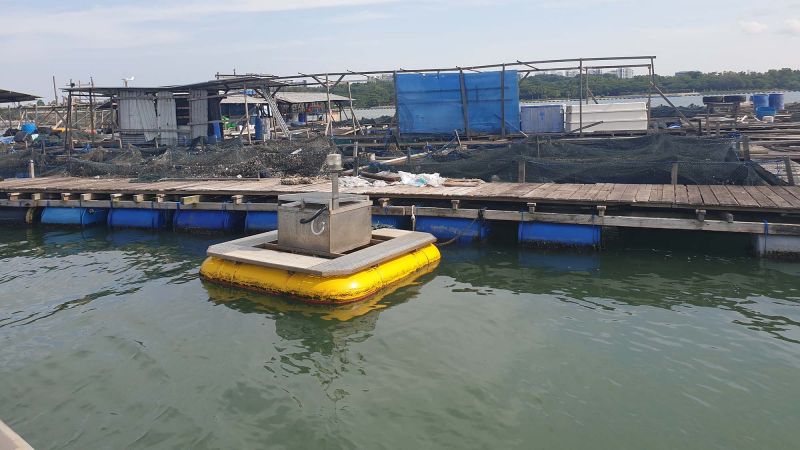Continuous Data Delivers Added Protection for Singapore Fish Farmers
Published on by Marcus Miller, Digital Marketing Manager at In-Situ in Case Studies

Overview
Continuous water quality monitoring in the Strait of Johor supports an early warning system that helps fish farmers in Singapore protect their aquaculture operations from harmful algal blooms.
Challenge
Aquaculture has become an industry of special interest in Singapore. Yet, much of the country’s farmed fish comes from coastal operations vulnerable to sudden and dramatic changes in water quality. In the Strait of Johor, the waterway that runs between Singapore and Malaysia, nutrient-rich waters can quickly produce harmful algal blooms, leading to large-scale die-offs of fish stocks.
While many of the region’s farmers have decades of experience and can spot color changes in the water that indicate a bloom, visual signs may come too late to avoid loss. Manual grab sampling also provides some insight on water quality, but sporadic data collection isn’t sufficient to catch changes in a dynamic environment.
Solution
Seeing the threat to the country’s burgeoning aquaculture industry and overall food security, interested parties launched a broad effort to monitor water quality continuously and use it to alert farmers in advance of a deadly bloom. The environmental monitoring firm Kizen worked with partners to install several long-term monitoring stations.
Aqua TROLL 500s gathering data on salinity, chlorophyll a, pH/ORP and temperature are deployed on several tethered buoys, which can easily be moved to different locations. In addition, several RDO PRO-X sensors monitor dissolved oxygen at standalone locations on coastal fish farms. Data collected 24 hours a day is wirelessly transmitted to a base-station system where it’s displayed on a web user interface.
The data is used to warn farmers of deteriorating water conditions, to detect harmful algal blooms and track their trajectory through the strait, and to identify changes in water conditions related to weather patterns and ocean currents.
“By tracking these physical parameters 24/7, we’re able to give the farmers enough time to take steps to protect their fish,” says Kizen Founder and Owner Mark Chan. “If data indicates a drop in oxygen levels, they can turn on their aerators. Or, if levels are too high, they can deploy nets to contain them.”
Chan says In-Situ equipment was selected for the project because it’s rugged, reliable and economical to use.
“When I first looked at the Aqua TROLL 500, I could see there was a lot of thought and consideration put into the product,” he says. “I particularly like that each sensor is designed as a quadrant and all the quadrants fit together to form a cylinder. It’s a good design because it facilitates antifouling and reduces the amount of exposed surface where fouling can occur.”
He also appreciates how easy it is to use the VuSitu mobile app for configuration, calibration and access to readings. “It’s so much easier than lugging a computer to your sites,” he says.
Results
More than two years into the project, Chan says the farmers are pleased with the program and the flow of data that lessens the likelihood of losses due to poor water quality.
Chan, who is an engineer himself and works with multiple partners to design, implement and manage environmental monitoring projects around the country, expects that the water quality data may eventually be used in predictive modeling on a larger scale.
“I can see this data, along with current studies and biological analysis, becoming part of a program that uses AI as a tool to notify users when and where an algal bloom will occur,” he says. “With economical, user-friendly equipment, we can provide the baseline data that will support widespread efforts to protect one of the country’s most important industries.”
LEARN MORE ABOUT OUR SOLUTIONS
Taxonomy
- Water Quality
- Hydrology
- Water Monitoring
- Water Monitoring
- Water Quality Management
- Hydrology
- Hydrologist
- Water Quality Monitoring
- Water Quality Monitoring
- Water quality
- Water Quality Research
- Surface Water Hydrology
- Algal Blooms
- Water Quality Monitoring Sensor
- Hazardous Algae Blooms